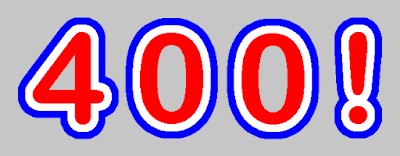Post Number 400: BFS + DFS
This is my post number #400. I think I have this idea that when I retire I'm going to read all this shit... Illusion...
In any case, here is the problem: Correct a Binary Tree - LeetCode
You have a binary tree with a small defect. There is exactly one invalid node where its right child incorrectly points to another node at the same depth but to the invalid node's right.
Given the root of the binary tree with this defect, root, return the root of the binary tree after removing this invalid node and every node underneath it (minus the node it incorrectly points to).
Custom testing:
The test input is read as 3 lines:
TreeNode rootint fromNode(not available tocorrectBinaryTree)int toNode(not available tocorrectBinaryTree)
After the binary tree rooted at root is parsed, the TreeNode with value of fromNode will have its right child pointer pointing to the TreeNode with a value of toNode. Then, root is passed to correctBinaryTree.
Example 1:

Input: root = [1,2,3], fromNode = 2, toNode = 3 Output: [1,null,3] Explanation: The node with value 2 is invalid, so remove it.
Example 2:

Input: root = [8,3,1,7,null,9,4,2,null,null,null,5,6], fromNode = 7, toNode = 4 Output: [8,3,1,null,null,9,4,null,null,5,6] Explanation: The node with value 7 is invalid, so remove it and the node underneath it, node 2.
Constraints:
- The number of nodes in the tree is in the range
[3, 104]. -109 <= Node.val <= 109- All
Node.valare unique. fromNode != toNodefromNodeandtoNodewill exist in the tree and will be on the same depth.toNodeis to the right offromNode.fromNode.rightisnullin the initial tree from the test data.
I first tried an inverse-in-order approach, but that did not work. I was forced to look at some hints, and noticed when folks were suggesting a BFS followed by a DFS. Then it hit me:
a) Perform a BFS to find the bad node. Use a Hashtable and go with a straight BFS. You should be able to find it
b) Then perform a DFS with the result from (a). Keep track of the parent node, also keep track whether the offending node is the right child or left child. Then nullify it accordingly.
Code is down bellow, cheers, and Happy Thanksgiving!!!
public TreeNode CorrectBinaryTree(TreeNode root)
{
RemoveBadNodeDFS(null, root, true, FindBadNodeBFS(root));
return root;
}
public void RemoveBadNodeDFS(TreeNode parent,
TreeNode current,
bool isRightChild,
int badNode)
{
if (current == null) return;
if (current.val == badNode)
{
if (isRightChild) parent.right = null;
else parent.left = null;
return;
}
RemoveBadNodeDFS(current, current.right, true, badNode);
RemoveBadNodeDFS(current, current.left, false, badNode);
}
private int FindBadNodeBFS(TreeNode root)
{
if (root == null) return -1;
Hashtable visited = new Hashtable();
Queue queue = new Queue();
queue.Enqueue(root);
while (queue.Count > 0)
{
TreeNode current = queue.Dequeue();
if (current.right != null && visited.Contains(current.right.val)) return current.val;
visited.Add(current.val, true);
if (current.right != null) queue.Enqueue(current.right);
if (current.left != null) queue.Enqueue(current.left);
}
return -1;
}




Comments
Post a Comment